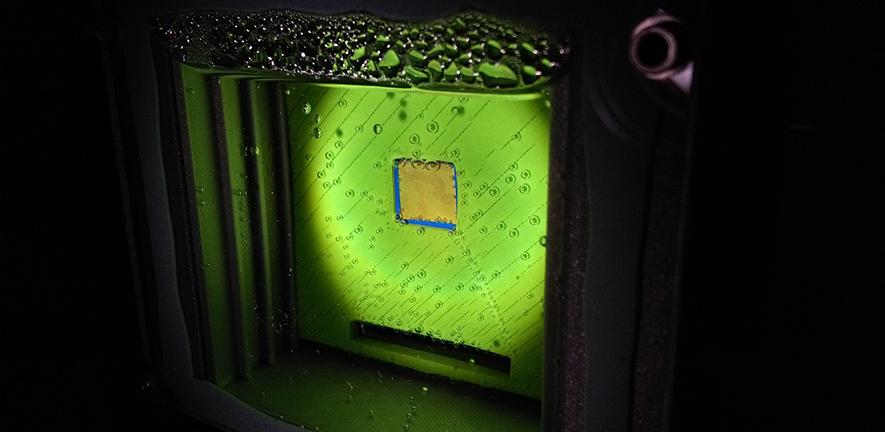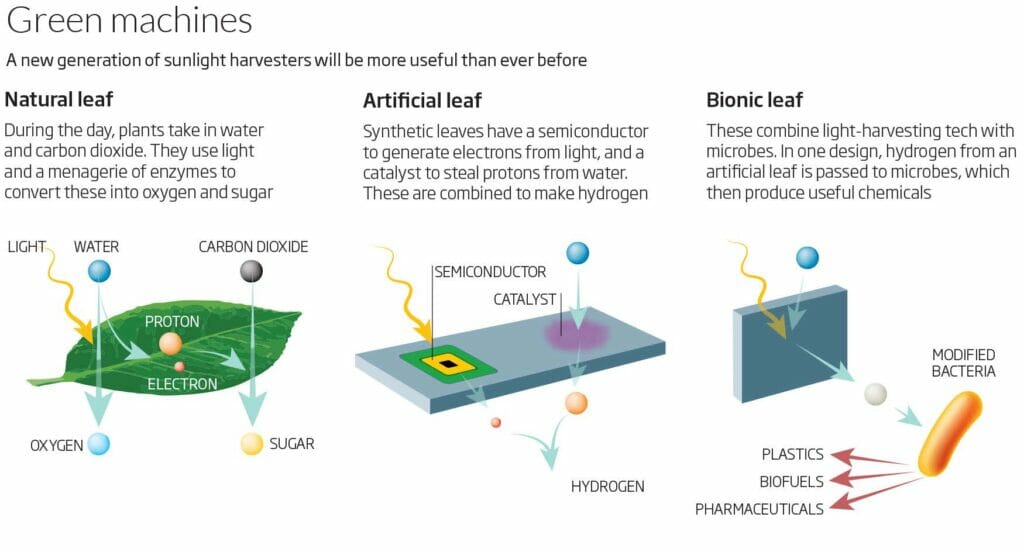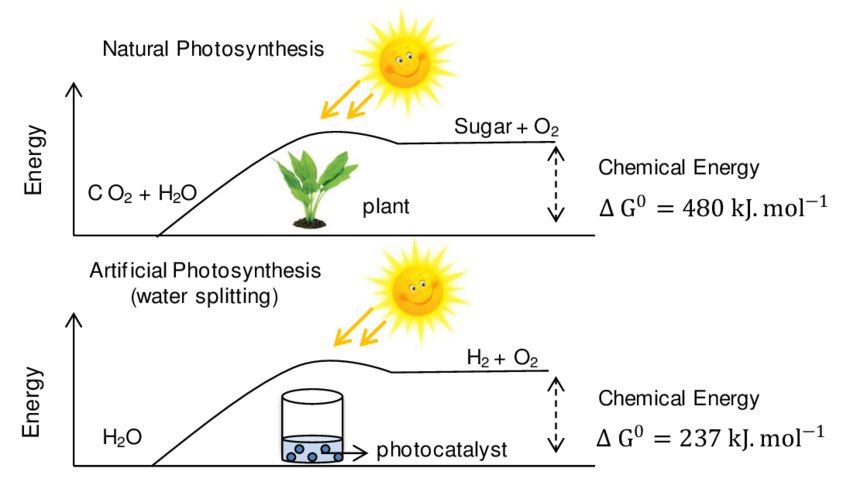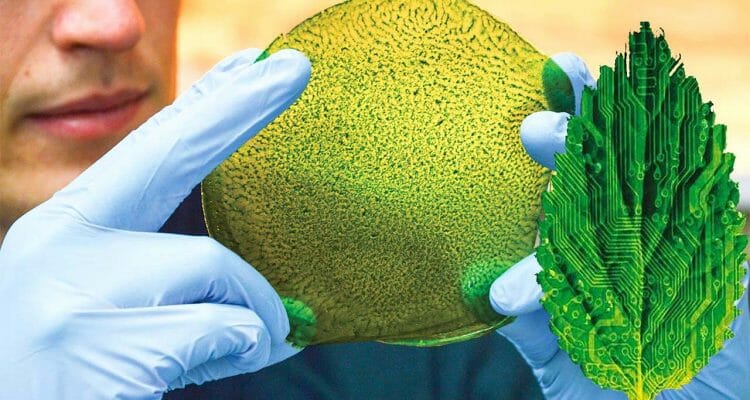Artificial photosynthesis, sounds fictional. Let’s start with some reality we all are facing. Fossil fuels, the exhausting source of our energy needs is deeming soon. Researchers, industries and people have begun ways to find alternative to them since past couple of decades. Many promising technologies and innovations were also presented, which can potentially replace fossil fuels. Yet the demand of world for more supplies which can be even more sustainable and efficient, needs to be fulfilled.
One of the ways proposed, in the past, was using solar energy for generating resources to fulfill those needs. But, convertibility of solar energy directly into resources was not that feasible and was also not much successful. This is because it needs large space and also needs proper arrangement of panels for getting better results. Still, it is used in many countries to produce resources and is considered successful to some extent.
Researchers at University of Cambridge, have done great study on the other hand. They have developed a stand-alone device, that can produce cleaner fuel which is carbon-neutral and completely sustainable. They have used the concept of artificial photosynthesis and made that device, which uses sunlight, carbon dioxide and water to produce such carbon-neutral fuel.
The ‘Artificial Leaf’ and Artificial Photosynthesis:
Synthetic-Gas (Syngas), is a mixture of hydrogen, carbon monoxide and little carbon dioxide. It is widely used in different areas like, fuels, pharmaceuticals, plastics and fertilizers. Many of the substances and everyday commodities are using syngas in them and we are using those things without knowing it. Most of us have never heard of it, and consume products that were created using it.
But researchers have demonstrated now that, artificial leaf can potentially produce this syngas in a simple way that is sustainable. Basically, on the artificial leaf, there are two light absorbers which replicate the molecules in the plant leaf that harvest sunlight. These absorbers are combined with catalyst made from naturally abundant element, cobalt. Absorbers are made from the material containing BiVO4. Also, they used perovskite, in making the structure, which is mineral of calcium titanium oxide (CaTiO3).

Inspiration from Mother Nature:
Working of such a leaf is simple and clearly mimics the photosynthesis process occurring in plants. When this device is immersed in water, one of the two light absorbers uses the catalyst to produce oxygen. While, the other absorber performs chemical reaction, in which it reduces carbon dioxide into carbon monoxide and hydrogen. This, on happening simultaneously forms syngas mixture. Using perovskite, as mentioned earlier, provides them with high photo-voltage and electric current to power the chemical reaction. This catalyst combination is much better compared to silicon or dye-sensitised material. Main reason of choosing cobalt over platinum or silver, is that, it is better at producing carbon monoxide. At the same time, cobalt is cheaper than other commonly used materials.

As an advantage, researchers stated that, these absorbers can even work efficiently in low light and can perform well. This means that, such a device can work perfectly on a rainy or overcast day. This opens up its usability to countries which are not warm and can be used in the months other than that of summer.
One step ahead: Making storable fuel directly
Using artificial photosynthesis, makes syngas. After that it is converted to liquid fuel which are useful later on. The team had now to look for ways to use that technology in making alternative of petrol by making sustainable liquid fuel.
Researchers recently presented ‘photosheet’ technology that directly converts CO2 and H2O into formate (HCOO_) and O2. This is a potentially scalable technology for utilization of carbon dioxide and stop pollution occurring via extensive use of CO2.

Artificial leaf used components from solar cells. This latest device made by them rely completely on the photo-catalysts embedded on the sheet and produced so called photocatalyst sheet. Which, doesn’t require components used in artificial leaf. The sheets produced are made from semiconductor powder. Such materials can be made in large quantities and are also cost effective at the same time.
This newest technology is robust and synthesize more cleaner fuel which is easier to store. It has also potential of making fuel products at scale. The test unit which was prepared by them was 20 cm2 in size and can be easily scaled up up-to several square meters. Also, the formic acid (HCOOH) produced in later reactions, can easily be accumulated and used chemically convert it into different types of fuel.
Success and Further Growth:
Success of this technology is unmatched and its unparallel growth can change the future. The chemical reaction occurring in photosheets, which reduces carbon dioxide to formate, has selectivity of 97±3% and Solar-to-formate (STF) efficiency of 0.08 ± 0.01% using water as electron donor. It also shows high stability during the photosynthetic reaction without sacrificial reagents. At the same time, enables scalability of the photocatalytic activity.

The wireless device could be scaled up and used on ‘energy farms’ similar to solar farms. Such farms can be helpful in producing clean fuel using sunlight and water. It was challenging to produce this type of clean fuels without unwanted by-products. Still, surprisingly, researchers claimed that this device produced zero number of by-products and completely proved to be highly selective.
Currently, cobalt-based catalyst which coverts carbon-dioxide is easy to make and comparatively stable. With idea of scaling-up the device, the efficiencies still need to be improved. For this, experiments are conducted with different range of catalysts to improve both, stability and efficiency. Also, with such explorations, possibility to get different solar fuels is seen and experiments are carried out for the same too.
Thus, with concept of artificial photosynthesis, researchers developed artificial leaf, and in-turn developed wireless device that can perform such chemistry without using complex components and electricity.
Why to dig deeper into the crust of mother nature, for the matter that can be made available from the flurry of air.
–OSD




[…] not really! The oil industry is in an existential crisis, the world is aggressively exploring green alternatives, even adopting a few, but oil will remain a major global energy source for decades to come. The […]
[…] The Battle for Secret ingredient that will power our future. Call it new gold, new oil or new strategic fuel, it’s about the rare earth […]